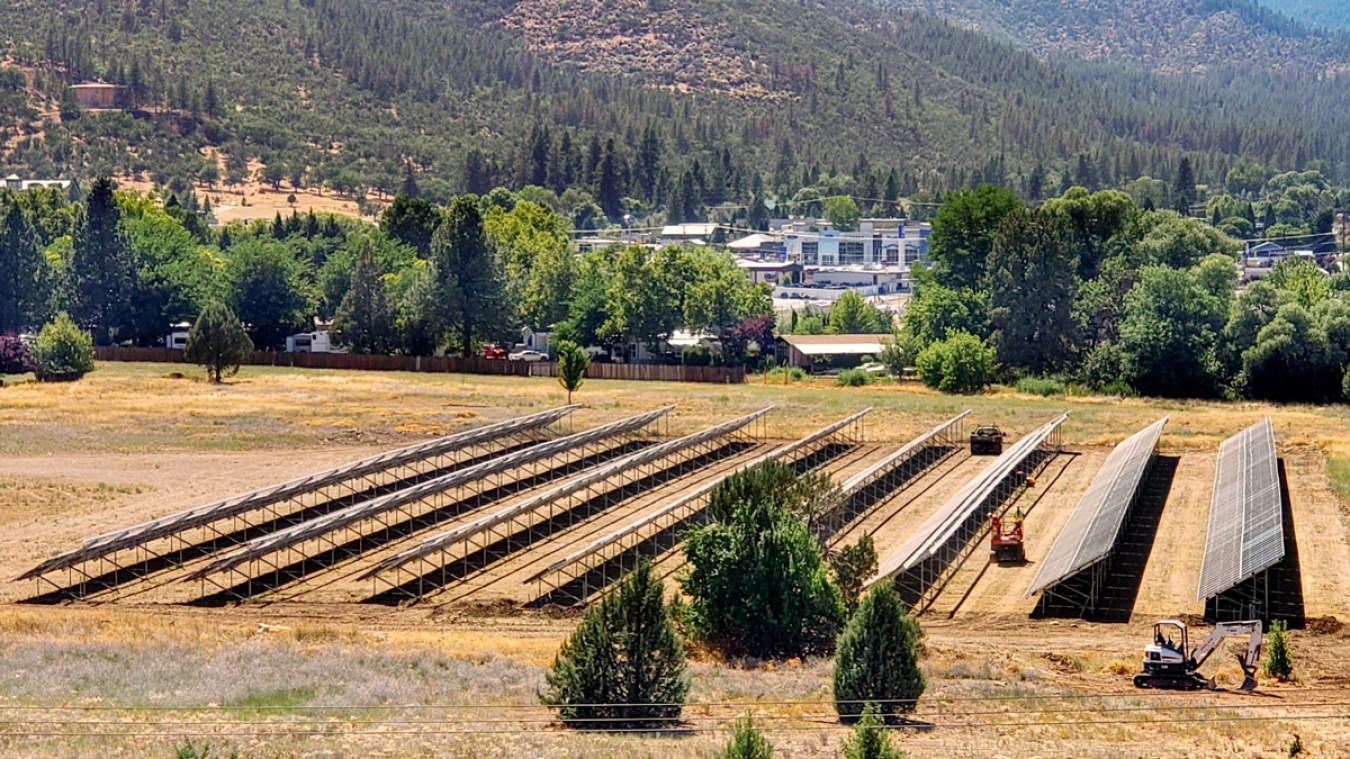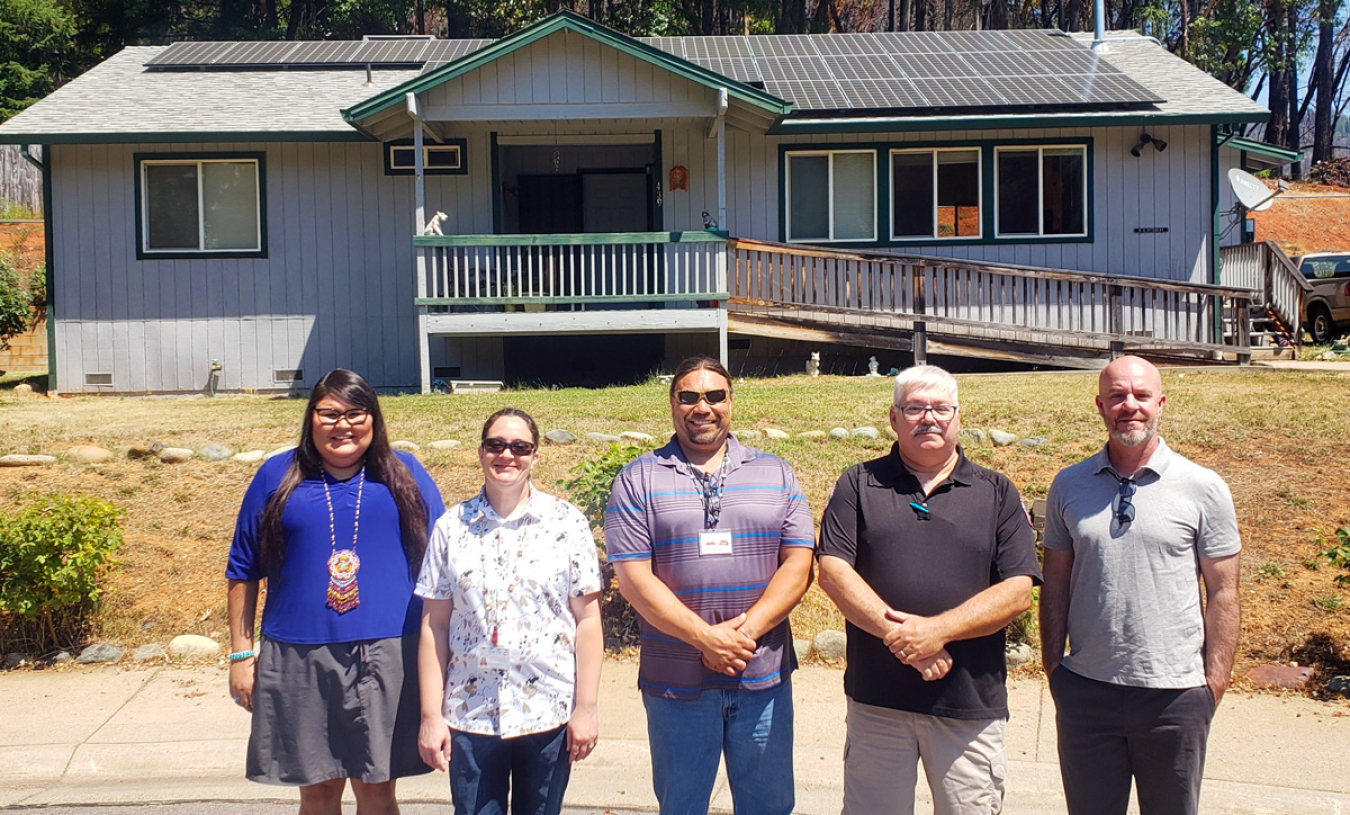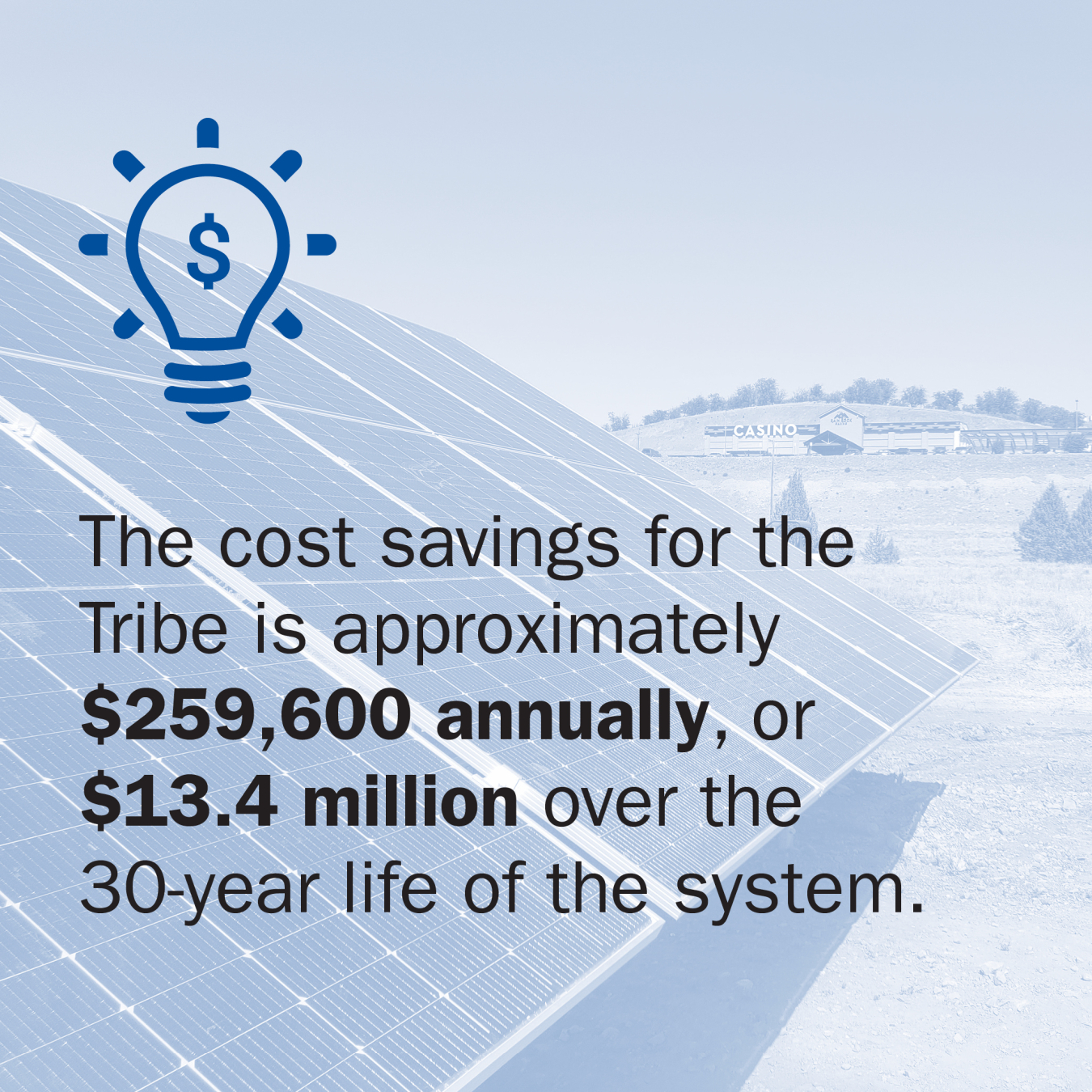Tribe Will Harness Power of the Sun To Offset Key Facilities’ Energy Use by 92%
Office of Indian Energy Policy and Programs
October 23, 2023Tribe Will Harness Power of the Sun to Offset Key Facilities’ Energy Use by 92%
In this Tribal energy snapshot, learn more about the Karuk Tribe’s Community Scale Solar Energy Generating Systems project. The project was co-funded by the U.S. Department of Energy (DOE) Office of Indian Energy.

Project Quick Facts
The Karuk Tribe seeks to achieve clean energy goals and reduce its dependence on traditional grid energy through the development of multiple grid-tied solar photovoltaic (PV) systems and battery storage. In addition to deploying a 948-kilowatt (kW) ground-mounted solar PV system that will offset the energy costs of the Tribal casino and administrative trailers, the Tribe will install 301-kW of roof-mounted PV systems with battery backup on 39 elder homes and power its new wellness center with an 18-kW roof-mounted PV system. The nearly $4 million investment in solar energy aims to bolster community energy resilience and offset the energy costs of these Tribally owned facilities by 92%.

In July 2023, Office of Indian Energy staff visited the Karuk Tribe to see the progress of all project sites, including this elder home with rooftop PV installed. View names and titles in footnote.
Take a glance at the project by the numbers:
Battery energy storage capacity:
The project will provide the Karuk Tribe’s 39 elder homes with a total of approximately 580 kilowatt-hours (kWh) of battery energy storage capacity to maintain critical load for elders during outages.
Savings to the Tribe:
The project is expected to save the Tribe an estimated $259,658 in energy costs in the first year and more than $13.4 million over 30 years.
Total project cost:
The cost of the project is $3,981,733, shared by DOE ($1,990,866) and the Tribe ($1,990,867).

Insight From the Project Team

Learn from Mike Rose, General Manager and Head Coach of Karuk Tribe’s Rain Rock Casino, on his experience with the project.
Why did your Tribe initially pursue this clean energy project? Was there a specific event or concern that sparked the need?
Tribal Chairman Russel “Buster” Attebery’s vision is to create a fully sustainable business model. Going solar is expected to offset the current electrical use of the casino and its administration trailers by as much as 90%. And solar-plus-storage will help maintain critical load equipment for the elders during grid outages. The Chairman and the Tribe are fully committed to sustainable business practices in all Tribal communities and endeavors.
How will the community benefit from the project once it is fully operational?
The goal of the project is to reduce the costs and environmental impacts of conventional energy sources while increasing the stability and reliability of power access in the surrounding rural areas. Going solar will help ensure the safety and security of our elders who reside in communities affected by frequent power interruptions. Based on our present progress, all locations will be fully operational by Sept. 17, 2024.
Besides cost-sharing, how has the Office of Indian Energy partnership benefited your project and energy goals?
Working with DOE and our contractors has been a fantastic experience. As a team we worked to develop a plan to meet the needs of the Tribe and our local community while providing an independent green energy source. This project will not only reduce our traditional electrical usage, saving us needed funds, but also provide reliable, clean solar energy that will help mitigate the frequent power interruptions we experience in our community.
Learn More
Learn more about this project, including additional background information, cost, and status, on the project summary page.
Explore more Tribal energy projects through the Tribal energy projects database.
Footnote
[1] Pictured from left to right: Corrina Ikakoula, Office of Indian Energy; Jennifer Goodwin, Karuk Tribal Council; Kenneth Brinks, Karuk Tribal Council Vice Chairman; Randy White, Karuk Tribe Emergency Services/Housing Manager; Joshua Gregory, Office of Indian Energy.

